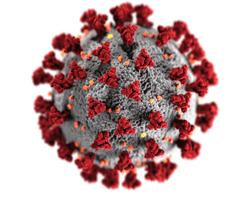
Thirty thousand base pairs make up the (relatively tiny) SARS-CoV-2 genome. A singular genome holds limited information. But, by comparing multiple genomes from different patients, animals, places, or time periods, the DNA’s information can be unlocked. From where the virus originated to how it spilled over from animals into humans, how quickly it mutates, and how those changes affect infections—genome comparisons may provide the answers.
Image: This illustration, created at the Centers for Disease Control and Prevention (CDC), reveals ultrastructural morphology exhibited by coronaviruses. A novel coronavirus, named Severe Acute Respiratory Syndrome coronavirus 2 (SARS-CoV-2), was identified as the cause of an outbreak of respiratory illness first detected in Wuhan, China in 2019. The illness caused by this virus has been named coronavirus disease 2019 (COVID-19). (CDC/Alissa Eckert, MS)
